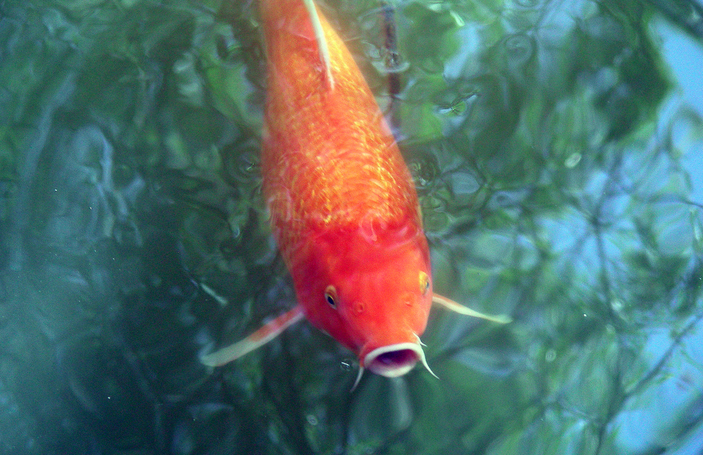Growing Koi to Their Full Potential
One of the joys of koi ownership is watching your fish friends grow up before your eyes. Especially if you’ve been there since their hatching, the transformation tiny koi eggs undergo to become full-grown fish is amazing to watch over the years. By providing a healthy and comfortable environment, maintaining proper nutrition, and a little luck, growing koi to their full potential will be a breeze.
Growing Up Is Hard To Do
There are many factors that contribute to a koi fish’s size. Like humans, much of a koi fish’s growth takes place during those early and influential years of life. From the hatching of the eggs and throughout their time as fry, very young koi need proper nutrition to sustain their growing bodies for maximum growth. Young koi should be fed four times per day and in smaller pellet sizes to fit in their mouths.
Also pay attention to the season when feeding koi. Like many things in nature, most of a koi’s growth occurs during the summer. This is when koi fish require more protein in their diet to support the higher levels of growth. When temperatures drop in fall and spring, diets should be switched to a higher concentration in wheat germ. During the cold winter months, koi do not feed.
Environmental Effects
While koi can survive in a wide array of temperatures, neither extreme hot or cold will benefit the growth of a koi. Consider placing your koi indoors throughout a harsh winter if possible, or adding more shade to the pond in hotter climates.
As a koi owner, you already know that overcrowding is harmful to your fish. But if you’re serious about maximizing growth potential, consider downsizing your koi population even further. Reducing your numbers will allow the koi that you do keep to have more room to grow. They’ll be stronger from the exercise and will have less competition for food. The occurrence of disease and poor water quality will decrease with your numbers as well.
Blame It On The Genes
Even with much care and effort put into growing large koi, sometimes a fish’s size is simply predetermined or heavily influenced by its parents. If you’re wondering about a young koi’s potential for growth, seek out information on its bloodline from your local breeder or pet store. Koi with larger parents will likely be larger themselves. And koi that are single-colored often times grow larger than their multicolored counterparts.
Have you grown a large koi? Send us your photos via the contact form!







